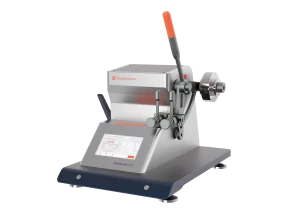With the progress of science and technology and the development of society, textile production technology and textile quality have been continuously improved and developed, and people have higher and higher requirements for textile-taking performance. Consumers have started to pay attention to the quality of textiles while pursuing their colour, pattern, function and quality. In addition to visual and hand-touch testing, external forces are applied to certain parts of textiles to test their other qualities. Tear is a major factor in the damage of all kinds of textiles, and its presence not only affects the appearance but also relates to the use value of the textile. Tear resistance is one of the basic properties of taking properties and an essential test item.
Are clothes really easy to tear?
Do clothes tear easily because of bad fabrics? Not really. Clothes tear easily mainly because the tearing strength of the clothes is not the same, and the influence of the fabric tensile tearing strength may be related to the following points:
Related to the breaking strength of warp and weft yarns
- The material of the fibre raw material and the blending ratio of the yarn
- The fineness of the fibre itself
- The fineness of the yarn
- The uniformity of the yarn
- The moisture back rate or moisture content
- Single yarn or strand
- The twist of the single yarn and strand (twist factor)
- The storage life of the fibre or yarn and other factors
There are also factors such as elastic fibres, including their elongation, which can make a big difference.
Related to the weaving method and conditions of the fabric (e.g. knitted and woven fabrics), the organisation (e.g. plain, twill, satin, jacquard, others, etc.), and the density of warp and weft yarns
Warp strength and weft strength are different, and so are the top breaking strength. Whether the fabric edge is included, whether it is a solid edge or a raw edge, whether it avoids blemishes and folds, and whether it is near or far from the edge of the original fabric, all of them may be different (so the sampling must be at least 150 mm away from the edge of the fabric).
In addition, the sizing of the blank fabric and the desizing of the cloth, after the dyeing and finishing of the cloth. In particular, the strength of impregnated and specially finished fabrics can vary considerably. The weaving process, dyeing, milling, etc. all have an effect. Coarse yarns reflect better strength than fine yarns, twill is better than plain, unshorn is better than shorn, and the less corrosive the dyeing, the better.
Related to the strength of the original yarn, the density of the warp and weft direction, yarn fineness, and finishing process
The strength of coloured woven fabrics varies with the strength of the original yarn, the density of the warp and weft direction, yarn fineness, finishing process of these items, so the strength of coloured woven fabrics should be improved from these items.
Non-iron fabrics by non-iron finishing tensile, and tear strength will also decline, directly affecting the durability of the fabric. Before and after non-iron finishing fabric tensile and tear strength, yarn strength and elongation, interweaving resistance, and morphological structure of the strength have a significant impact.
Yarns with high strength and elongation have large force triangles when the fabric is torn, and the number of yarns that share the force is large, so the tearing strength is high. Organisational structure, warp and weft yarn density affect the interweaving points and slip between yarns. With fewer interweaving points, and easy to slip between yarns, the fabric’s tearing strength is high.
Related to the duration of actual wearing of garments
Clothing in the actual wearing process after a period of wear, due to the friction of the fabric in the yarn thinning, some parts of the fabric will often be subjected to a sudden tearing effect.
For example, when squatting, some parts of the buttocks of the trousers, and the parts of the garment are hooked by sharp objects. These parts of the external force so that the internal yarn of the fabric by root by root by the ultimate load and breakage. Textiles in the process of use, if the long-term role of the local concentration of load, it is possible to make the strength reach the limit and decline, thus affecting the fabric’s tensile, and tearing strength.
How would you make clothes and fabrics tear-resistant?
1 Blend with high-performance fibres to improve the tearing performance of fabrics by increasing yarn strength.
2 Improve the warp and weft density of the fabric, and increase the number of yarns in the force triangle of the fabric during the tearing process. Increasing the yarn shrinkage and the number of roots to improve the tearing performance of the fabric.
3 Change the fabric organisation to improve the movement of yarn in the organisation during the tearing process. Increasing the number of yarns under force to improve the tearing performance of the fabric.
The above are also improvement measures to enhance the tearing strength.
About Tearing Strength of Fabrics
Scope of application
Tear strength can react to the degree of catalysis of the fabric after finishing, so the combed fabrics of cotton-type fabrics and wool-type chemical fibre pure spinning or blending by resin finishing should be tested for tear strength. Knitted fabrics, except for special requirements, generally do not carry out tearing tests.
Why Tearing Strength of Fabrics Test is Important?
Clothing after a period of wear and use, due to friction to make the yarn thin, the fabric within the local yarn force breakage and the formation of cracks.
Fabrics used for military uniforms, canopies, parachutes, hammocks, etc., are more likely to be subjected to concentrated loads in use, resulting in localised damage and rupture of the product.
The fabric is hooked by an object, or the fabric is partially held, in the external force so that the fabric is torn in half.
The phenomenon of fabrics being torn apart by such concentrated loads is commonly referred to as tearing, or sometimes as ripping.
Tearing, which can be described as the sequential breaking of a single or several yarns in a fabric along a seam, is one of the most common ways in which fabrics fail or reach the end of their useful life.
The tearing of fabrics is a common and easily occurring form of damage.
Due to the specificity of the local force at the split, the tear strength of the fabric is much smaller than its tensile breaking strength.
At the same time, the tear strength index is the main quality index to measure the damage resistance of fabrics when localised forces are applied in the process of use.
Other forms of mechanical damage to the fabric (top break, wear and tear, etc.) are often torn as the final form of damage, in order to improve the life of the fabric, fabric tearing must be studied.
What factors will affect tear strength?
1 Raw materials for different fibre materials
The raw materials of different fibre materials exhibit different strength properties.
2 Properties of the yarn
① Coarser yarns have better tear strength and tensile strength;
② The tearing strength of short fibres is lower than that of filaments;
③ Twist can improve the tearing strength of fabrics, but too high a twist will make the yarn brittle and the tearing strength of fabrics will decrease;
④ The greater the breaking elongation of the yarn, the greater the fabric tearing strength.
3 Fabric organisation
When other conditions are the same, the order of tearing strength from large to small is satin organisation → twill fabric → plain fabric organisation.
4 The density of the fabric
Generally speaking, in low-density fabrics, with the increase in density tear resistance increases, but when the density is high, with the increase in fabric density fabric tear strength decreases.
5 Fabric finishing process
Part of the finishing process causes the fabric surface yarn structure damage, yarn strength decrease, or fabric brittleness increase, which will make the tear strength decrease. There are also after the coating finishing process may lead to the fabric warp and weft yarns being fixed in a relative position, can not be moved, will lead to a substantial reduction in the tearing triangle of the fabric, so that the strength of the coating will be coated with a substantial reduction in the strength of the coating of the former, in the process of doing similar to the necessity of assessing the tearing strength.
Tear strength test methods on textiles
Pendulum Method
The specimen is pre-cut with an incision, and when the hammer falls instantaneously the sample will start to break from the first yarn in the tearing triangle area until the whole sample is torn, at which point the tearing force is recorded.
Trouser Type Method
The principle is the same as the pendulum method. The trouser method is a slower and uniform tearing, the two sides of the trouser specimen or the two sides of the tongue specimen are placed in the fixture of the strength machine, the direction of the incision of the force applied to records the tearing to the specified length of the tearing strength.
Trapezoidal Method
Two non-parallel sides of the trapezoidal specimen are clamped in the fixture of the force machine, force is applied to make the tear propagate along the width of the specimen, and the average maximum tearing force is recorded. Trapezoidal tearing starts from the first marked yarn until the nth unstretched yarn, which is resisting the tensile force from the perpendicular direction, so trapezoidal tearing can also be said to be part of the tensile strength of the yarn.
Wing Method
Wing method will be the specimen two wings tilt clamped in the strength machine fixture, record the tearing to the specified length of the average value of the tearing force. The tearing strength of the wing method is basically the same as that of the trapezoidal method, only the angle is different; the different angle means that the number of yarns involved in resisting the tensile force is different, and the final result cannot be compared with that of the trapezoidal method.
The principle of an Elmendorf Tear Tester
The specimen is fixed in a fixture, an incision is made in the specimen, and the pendulum in the position of maximum potential energy is released. When the movable fixture leaves the fixed fixture, the specimen is torn along the direction of the incision, and the work done to tear the fabric for a certain length is converted into a tearing force.
Warp yarns are torn called “warp tearing strength”, weft yarns are torn called “weft tearing strength”.
When the stressed yarns in the specimen gradually separate up and down, the yarns that are not directly stressed begin to have some relative sliding with the stressed yarns and gradually come together to form an approximately triangular area, usually called the stressed triangle.
ElmenGuide Elmendorf tearing strength tester does the bursting test by using a pendulum tearing method. ElmenGuide is mainly suitable for woven fabrics, but also for other textiles produced by other technologies, such as non-woven fabrics.
Solutions to the large difference in the test value
When comparing results, the same specimen in the same direction tested on the instrument should give consistent results. When the results are found to be inconsistent between instruments or operators, it may be due to the following reasons.
1 Differences in temperature and humidity
Firstly, the specimen needs to be tested after temperature and humidity adjustment, and the testing process should maintain the same temperature and humidity environment. Temperature and humidity will affect the specimen’s brittleness, softness, hardness, water absorption and other indicators, which will lead to different specimen tear values.
2 Specimen processing of different sizes, especially different widths
There are two kinds of sample cutting methods in the standard, constant radius and rectangular specimen. Two specimen test out of the data is not comparable, so compare the data first to set aside the same way to cut the sample. In the same way to cut the sample, the size of the sample must be the same, especially the width of the sample, which directly determines the size of the tear value. In addition, the cutting sample is to choose a flat, wrinkle-free specimen.
3 Different slit lengths for punching
The tearing instrument is equipped with a punching knife, used to cut the sample. If the length of the slit of the punching knife is not the same, the cut out of the specimen is not the same. The tearing value of the test is not comparable. Therefore, when purchasing the instrument, we should confirm whether the specimen cut by the punching knife is standard or not.
4 The direction of the specimen (longitudinal and transverse) is different.
In the production of film or paper, the production line is assembly line type, and many specimens are divided into longitudinal and transverse directions, longitudinal and transverse material texture densities are different, so there is a difference in the degree of tear. So, check whether the test specimen’s longitudinal and transverse direction is consistent.
5 The number of layers of the specimen is different.
Tear degree test, you can set the number of test layers, and multi-layer together for the tear test. Check whether the number of layers of the specimen is the same during the test. Thickness is different, if the specimen sampling thickness is different, it will also affect the tear degree value.
6 The pendulum range used is not appropriate (the value should be 20%~80% of the range).
Standard requirements, the use of the test range should be in the total range of 20% ~ 80%, if the range is recommended to replace the pendulum capacity.
7 If the selected pendulum capacity is not suitable, the test data is inaccurate.
For example, according to the requirements of GBGB 11999-89. In the test, in order to make the energy absorbed by the pendulum in the tearing process located between 20%~80% of the total energy of the pendulum, the test should be done first according to the steps stipulated in clause 8.4 to determine whether it is necessary to increase the weighted pendulum or whether it is necessary to use multi-layer specimens, and each time after installing or removing the weighted pendulum, the zero point should be adjusted according to the instruction manual of the instrument.
8 Instability of the test bench where the instrument is placed.
If the test bench surface has vibration, strong electromagnetic interference and other influencing factors, it will have an impact on the instrument. Especially if the table surface is tilted, the gravitational potential energy of the pendulum will be affected.
9 The level and balance of the instrument are not adjusted properly.
Before the instrument test, it must be adjusted horizontally.
10 The zero point of the instrument is not calibrated.
The tear meter in the swing process will be affected by the wind resistance, so the zero point calibration.
Conclusion
The factors influencing the tearing strength are most of all centred around the size of the fabric tearing triangle. There are differences in the testing principles of different methods, and the results of different standards are not comparable.
The impact pendulum method is generally more suitable for twill fabrics with higher tearing strength, such as denim fabrics. Trouser-shaped specimen (single-seam) method can reflect the printing and dyeing process and fabric organisation structure caused by the changes in tear resistance, generally more suitable for a variety of woven fabrics (cotton printing and dyeing fabrics, combed woollen fabrics) and the direction of the tear has a regular nonwoven and so on.
Trapezoidal specimen law can reflect the toughness and durability of the fabric, generally more suitable for corduroy fabrics and other woven fabrics and some light non-woven fabrics.
Producers can choose the most appropriate test method according to the actual wearing environment and the use of the product crowd.




